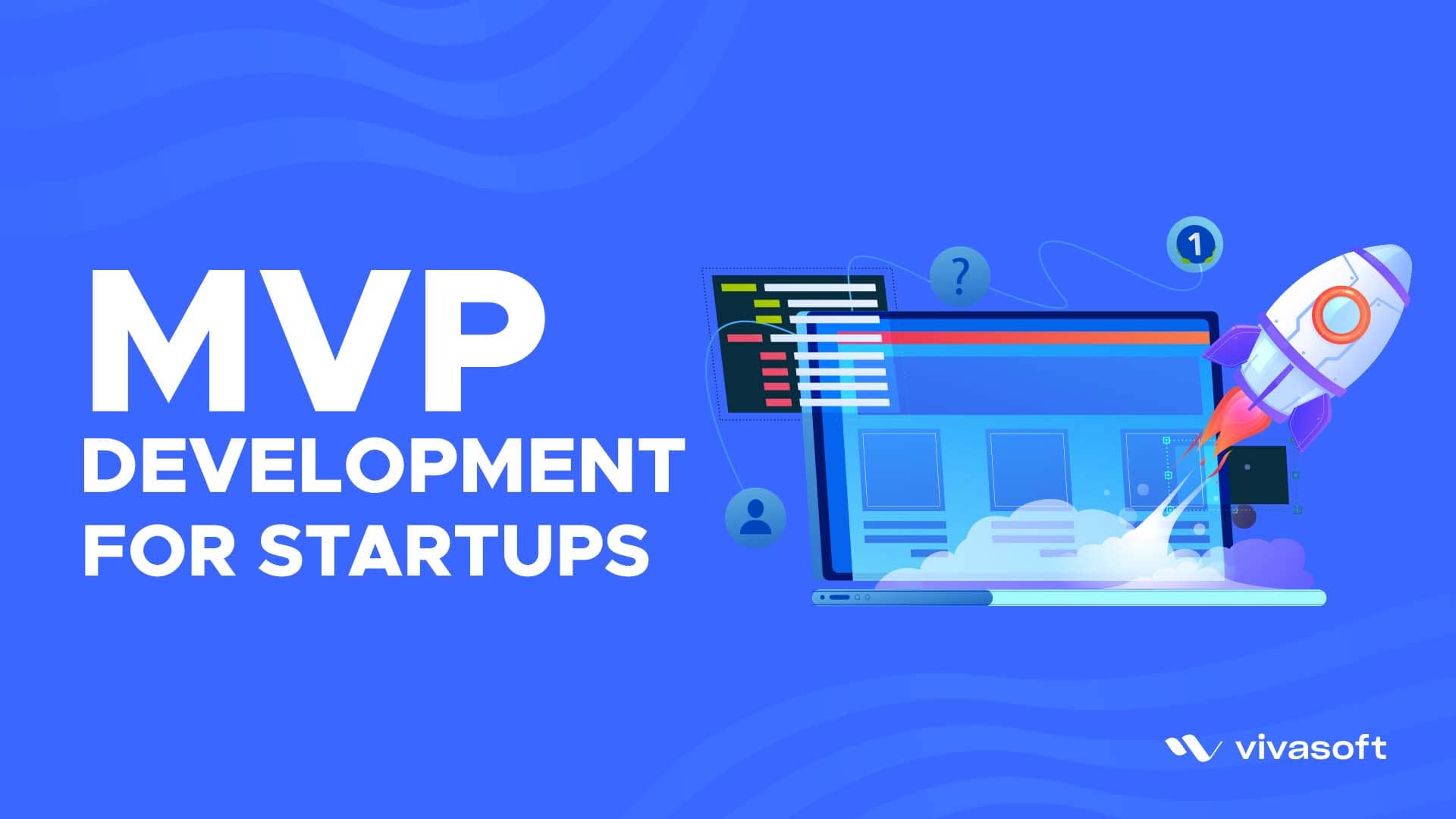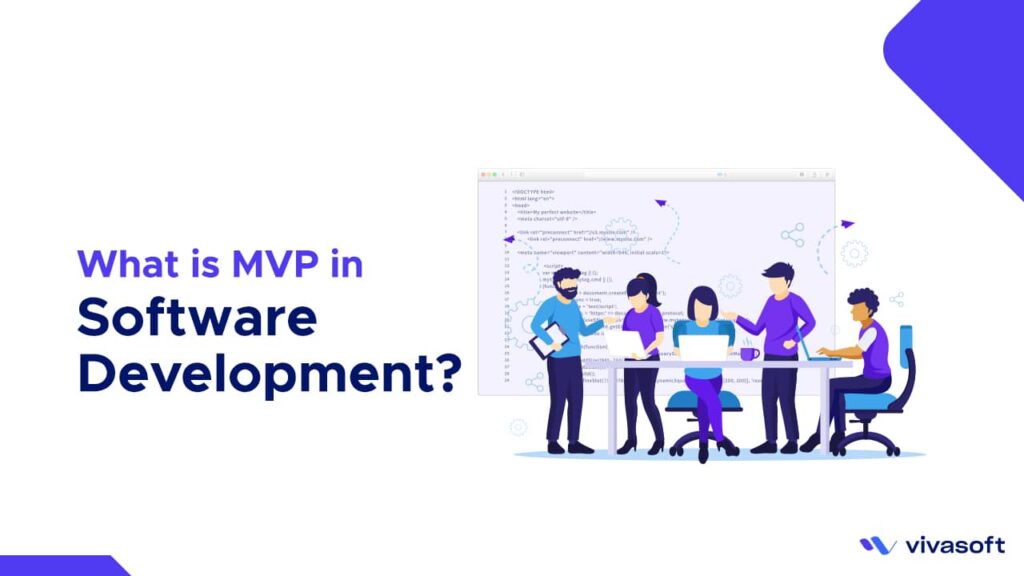MVP Development for Startups
MVP Development for Startups, is a very important term for a startup company to use to distribute all the available resources properly while maintaining proper ratios in all the activities related to business.
Entrepreneurship is considered very challenging in many ways. Firstly, you will have to bring a new product to the market, develop new ideas and strategies, and finally build a new product in the market.
In this very competitive age, managing all these criteria can be very difficult. So, for the proper investment in all the areas to flourish the business, MVP development is an essential tool.
In this article, we will broadly discuss MVP Development for Startups. We will discuss the benefits, approaches, tools, and techniques, MVP development process, some pitfalls of MVP, Klikit’s Startup MVP success story, and other points related to MVP.
What is an MVP?
MVP means Minimum Viable Product, which is a strategy that allows startups to go public and win the hearts of their audience. This is a process of cutting expenses and attracting investors to invest in the business.
If we look at the statistics, up to 90% of startups collapse after starting their business. Among them, about 10% quit at the beginning year, and 70% collapsed between their 2nd and 5th years.
MVP is the version of a product including special features for testing the market. An MVP can be launched through a web page, custom application, program, or in any physical location.
MVP emphasizes focusing on the basic version of the product so that feedback can be gotten from the customers for further product improvement.
Principles of MVP for Startups
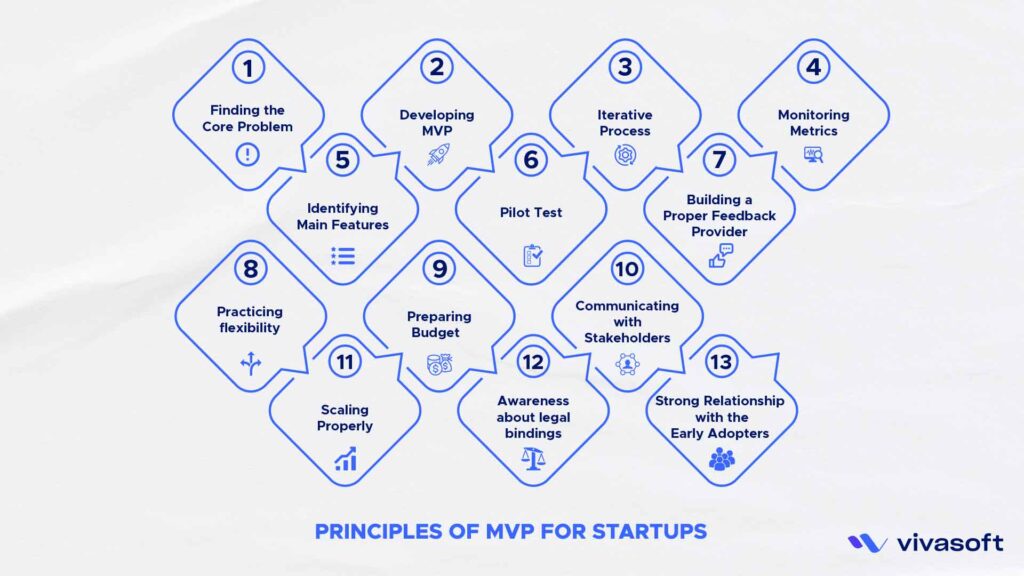
1. Finding the Core Problem
First, you need to understand the core problems related to your product. If you know the core problem, then you will be able to develop MVP and be sure about the customer acceptance of your product
2. Identifying Main Features
You need to identify the features of your product to create its market acceptance. The list of key features and problems related to these features will help you develop your MVP.
3. Developing MVP
Next, you need to develop the product with all of its key features. Although in this version, you don’t need to include all the bells and whistles, the product should be available for use.
4. Pilot Test
Before releasing the product publicly, you need to run a pilot test with a small group of people about how they feel about the product. This test can be done internally or to a limited set of audience. Their suggestions can help to find out small mistakes and improve the product quality.
5. Iterative Process
Using the feedback from initial audiences to improve the product bears great importance. This allows you to restructure your product based on real-world usage.
6. Building a Proper Feedback Provider
Be it any app, survey, or other communication channel, proper feedback medium is very important for a successful product launch.
7. Monitoring Metrics
Identify key performance indicators relevant to your product and observe them closely. KPI includes indicators like user engagement, retention rates, and conversion rates.
8. Practicing flexibility
You should be very flexible about your product development. If the feedback indicates to go in other directions, then you should be ready to adapt to any of those situations. Flexibility is one of the main benefits of MVP development for startups.
9. Preparing Budget
As a startup, your initial cost should be minimized. However, you should keep in mind that along with the business plan, your budget also might need to be changed.
10. Communicating with Stakeholders
The stakeholders should always know the changes made to the product. The feedback of the audiences, progress made in the changing process, time and costs predicted, and so on.
All information should be made available to the stakeholders. Stakeholders include investors, employees, and partners of the business.
11. Scaling Properly
MVP for startups often needs to be appropriately scaled. Scaling includes ramping production, and expanding the firm’s overall capacity, and team.
12. Awareness about legal bindings
MVP for startups should comply not only with the relevant regulations but also, with intellectual property rights should be adequately maintained.
13. Maintain a Strong Relationship with the Early Adopters
Early adopters are very important for your business. They should be treated properly so that your business can earn value through them.
Why MVP Development for Startups is Important?

1. Saving Time, Money, and Effort
A very common challenge that every startup business faces is financial crisis. Entrepreneurs often need more financial resources. For that, like many startups, you can also use the MVP approach to save money and effort.
In this stage, you will include only the basic features so that the development cost can be avoided. Also, you can minimize the business risk.
2. Fast Business Testing
MVP development for startups has a main target which is the fast validation of business decisions. MVP does not require complex designing such as UI/UX.
The main reason behind launching MVP is to ensure better product quality. You can test-run the business and be ahead of your competitors. A quick entry to the market is possible through MVP. This will also give you a competitive edge over your competitors.
3. Collecting Early Feedback
MVP development for startups is really important for growing your business rapidly. The earlier you bring your MVP products, the earlier you will reach your potential customers.
For an early MVP development, you will get many benefits. You will get time to improve your product, you can even pivot if you get enough information about customer demands and satisfaction.
You can improve customer performance and also pave the way to provide a customer-centric product through customization. Iterative improvement is a proven way to be successful in the business world.
4. Defining the Core Features
MVP development can let you know about what features are important for you and what features are not! So, you can delete the unimportant features or improve them.
Thus, you will be able to give customers what they want and gain customer satisfaction. Through this continuous enhancement, your product will be able to fit the market
5. Attracting investors
Creating an MVP for your startup will attract investors to invest in your business. MVP is a great way to introduce the business idea to the investors.
You can catch their interest and bring good fortune to your business. But you need to prove the viability of your business and prove the market demand for the product.
Types of MVP for Startup Companies
There are two main types of MVP. Different type of MVP is necessary based on the distinct characteristics of products. The two types are-
- High Fidelity MVP
- Low Fidelity MVP
High Fidelity MVP
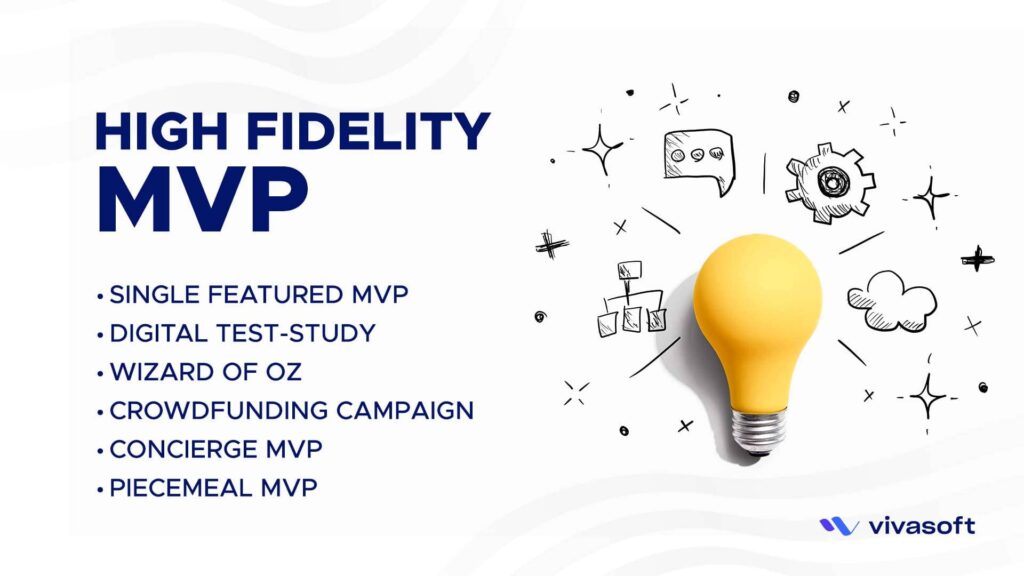
High-fidelity MVPs are the ultimate guide to developers which gives insight about a product. It indicates if a product can solve a particular problem prevailing in the market or if it’s able to fill the market gap.
Moreover, this type of MVP is more specific to the functions of the product that cater to the client’s needs. High Fidelity MVPs often revolve around the actual test study of your MVP.
Some of the examples of high-fidelity MVP:
Single Featured MVP
This is the form to test only one feature. You should focus on the selling point of your product. This process helps you make your customers distracted about other features and get them to concentrate on specific core features of your product that might create a positive impact.
Digital Test-study
These testing or prototypes are Mock-ups of your MVP. These allow your customers to examine the product by saving both time and money.
This is the process through which you can test different features of your product and their customer acceptance. Thus, you will be able to resolve any problem related to the product in advance.
Wizard of Oz
This is the MVP which provides a real-life idea about your project to the potential customers. For making your customers believe that the product you are saying to provide exists in real life and will render service to them.
This will help you to maintain a lower cost and thus provide a very effective service.
Crowdfunding Campaign
After the email campaign phase, there comes a more forward step, called crowdfunding. Rather than just interest, this phase focuses on getting purchases and contacts before the creation of the product.
Concierge MVP
This is an MVP approach that tests the service without fully building the service. For example, if you want to create an app related to health services, you can first make a manual list of individual customers needing separate services and thus know the actual demand for the service.
If your customers are positive about your service, then you can follow further steps. But You should be clear to the customers that the service is not fully automated yet.
Piecemeal MVP
This is the platform combining all the pre-existing products and creating the foundation of new services. Several tools allow you to create a medium of interaction between users. By stringing them, you can form an innovative service that has market demand.
Low Fidelity MVP
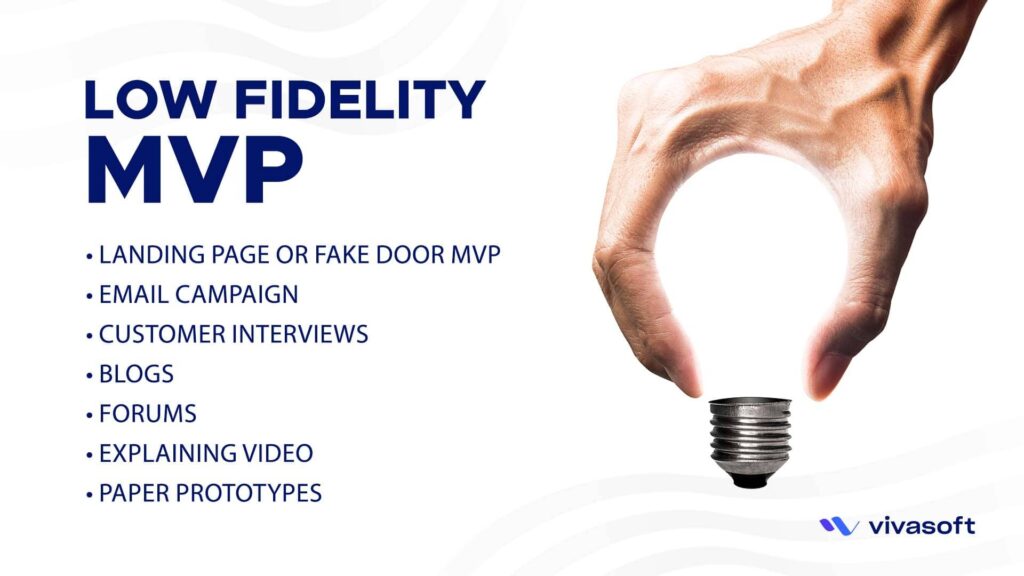
Low fidelity MVP tends to find out does your business solves the problems of the customers. These MVPs will help you measure the response of your customers about the product. So, you will be able to identify the problems and update your product accordingly.
Besides, these MVPs will lead you to better iterations in the future. You will be able to record the customer response outside your target market which will add more to your profitability.
Some of the examples of Low-Fidelity MVPs are-
Landing Page or Fake Door MVP
For this, you can create a single-page website that will describe your products simply by pressing the Buy Now button. However, the customers might not always be interested in buying the product.
But the benefit you will get is, to collect some of the customer information or their recommendations which will help you develop the product.
Email Campaign
Another very effective way to reach your target customers and know their tastes is email marketing. For this, first, you need to have the email list of all your customers.
To gather all the necessary information about your potential customers, you can ask the customers about their interest in your product by asking them if they are interested in joining the pre-launch waitlist of your product. Then, you can evaluate the rate of response from them.
Customer Interviews
This allows you to know about your customers and their opinions about your products. There are many problems related to pricing, place, promotion, product, and purchase behaviors that might need to be sorted out. Customer interviews are a very effective way to find out the proper solutions.
Blogs
This method is great for validating your ideas within your target market. But in this process, you don’t need to put in much effort. It’s a great way to promote your products.
Forums
These can also be a very effective medium to understand your customer’s demands and problems easily. Through the knowledge of your target market, you can easily maintain the product structure that is preferable to the customers.
Explaining Video
A video including a short description of different features, use, and benefits of the products. People will find the reasons why they should buy the product through this video.
Paper Prototypes
Paper prototypes are a great way to create a first-hand experience for your customers. Before even the existence of your products, the customers will get a flavor of how well the product is serving, and you will get their impression about the product.
How to Choose the Right MVP Development Approach for Your Startup Company
In the above, we have discussed some types of MVP approaches. Now, to decide what kind of MVP approach is best for your company, that would depend on your product, service, and other features of the business.
Now, you need to decide what’s best for your company. You can choose the right one by the features of your business. You can also mix up some of the above and apply them to your business. You just need to determine what’s the best way to gauge interest in your product or service.
You need to deeply analyze your target customers, their needs, and preferences. And so on. For their demand, you might need to mix two or more types of MVP approaches and apply them to MVP development processes.
MVP Development Tools and Technologies
Selecting Technologies
While choosing technologies for the MVP development process, you should always look for proven methods and follow the current trends. If you go for the popular and common solutions, the risks of your project failure become lower. You should also look for cost-efficient technologies.
You can choose native app development or cross-app development.
Native app development is the process of developing software to run on a particular operating system. For example, for iOS and Android, different apps are needed to be built. For iOS the technological choice might be Swift, for Android, it’s Kotlin.
On the other hand, cross-app development allows you to develop apps for multiple operating systems or devices with one code base. Instead of developing separate apps, you can choose only a single developer who will create apps for both types of devices. Flutter is such a device.
Selecting Tools
There are existing tools in the market that are already proven to maintain a good standard in the market. Tools like Asana and Jira can be used. Moreover, to be familiar with agile methods, you can use Scrum or Lean Six Sigma. Figma or other design tools can be used for graphic works.
MVP Development Process for Startups
Idea generation
Idea generation of the product you are going to launch is the first step of the product development process. Brainstorming and identifying market needs are the first part of the idea-generation process. Idea generation can be very crucial as very important factors are related to the whole process.
Market Research
The very significant thing of the market research process is analyzing your target market. You should analyze the following data:
- The customer’s needs and attitudes toward your product
- The market trends
- Price level and rate of return
- Advertising and promotion
You should also analyze your competitors in this phase. By examining the competitor’s products, you can work on a competitive advantage through which market acceptance of your product can be maximized.
Build a User Flow and Design MVP
To ensure an effective user experience of the product, you can create a user flow diagram and analyze important customers’ points of view about the product.
For MVP design, you do not necessarily have to create a perfect design having all the product features. You can use UI/UX design to confirm the core features.
You can also create a prototype of your product to let your customers know about your product in only a single click.
Test and Develop MVP
After the whole analysis process is done from all the necessary information collection, then it’s time to develop the MVP process. The developing and testing phase is done through some steps:
- Find both the strengths and weaknesses of your MVP, along with the solutions regarded.
- Choose the management and development techniques and proceed with Quality Assurance Testing.
- Identify the external and internal risk factors.
- Furthermore, you can describe a story of one of your users about his/her journey with your company. This will inspire customers by giving them a real-life ex[experience.
Launch the Product and Work on Feedback
After you release the MVP, you should do further testing and analyze the customer’s opinion on your product. You should analyze them critically. Mind those mentioning the interface and usability, list of features, design, and the overall customer experience.
Questions like-
- Did the customers enjoy the product features?
- Would the customers recommend the product to their near ones?
- Does the pricing fit the product? What does the customer think?
- What features can be added or eliminated?
Through all these questions, customer feedback can be known and you can diversify your product by taking the appropriate ones.
Best MVP Development Practices for Startup
- Start from Small
You should not start big from the beginning of your journey. You can start from small and grow big eventually. So, first aim for small things and once you have those, aim for bigger ones. This process will let you know your potential.
- Specific objectives
You must be sure about what you intend to do with your product. Specific objectives will be helpful to set up your business properly and focus on what you are trying to provide through the means of the business. Such kinds of strategies will help you please your customers through quality products.
- User-friendly design
Your product should be user-centric. Behind the development of every product, the main reason is to get customer attention. Customer satisfaction can ultimately help you get a business that will bring profit and prosperity.
- Continuous modifications
The adaptability of new products is not very smooth. If a customer ever comes to any realization that the product might not be working right, then it’s possible they will abandon the product and might never get back to it. So you should modify the product according to customer preferences.
- Scalability
Your product should be scalable enough. The features should be distinguishable and the customers should be able to separate your product’s features from other company’s products.
Unique characteristics and special features will make your products more scalable and the customers will scale your product higher than the competitor’s products.
Challenges of MVP Developments for Startups
- Resource Allocation
A challenge that is often faced by companies, is the problem of scarcity of resources. It can take a lot of work to determine what is the optimal amount of resources that should be used for a particular project.
To properly optimize the resources, you should ensure that the product is being developed promptly, and within budget, and consider using agile development methodologies such as Scrum.
It’s also really important to allocate the resources that are best for the projects you are running. This includes allocating skills and experiences to your development teams properly.
- User Feedback
Gathering user feedback is very important once the MVP development is done. You should engage users, gather their feedback, and then crystallize what you need to grow. As this process is very complicated, you should rather use a separate system for collecting all the relative information.
A feedback loop is a process that allows you to collect, and analyze customer feedback and then apply those to your product to improve the product. Also, a customer feedback portal can be launched so that your customers can drop their valuable opinions on your product from different points of view.
- Technical Challenges
Technical challenges such as scalability, security, and performance might be a hurdle in the MVP development process. To reduce the challenges and ensure the focus on developing quality products, you can consider leveraging cloud technologies that offer pre-built tools for ensuring scalable and secure applications.
An inappropriate tech stack can impact your business negatively. So, better, identify those, fix them, and replace them with the perfect ones.
- Scope Creep
The features of your service should be enough to cover all the angles of your product or service. However, too many features might cost you too much, so be sure about not putting too many features on the page or app of your MVP development.
MVP is more like the skeleton of your product including the most important or integral part of your products. The product focus should be maintained properly.
Pitfalls to Avoid During MVP Development in Startup
1. Mediocre MVP Engineering
Once you identify your core needs, you must engineer them right. Mediocre engineering is the type of MVP where you engineer too many more things than the features of your product.
These too many features distract users from having very poor workflows. Also, these features do not help users finish their main tasks. A good MVP is easy for the users to use. It interacts well with the audience and provides them with all the important information they need but not anything too extra.
2. Ignoring the User Feedback
If you ignore the user feedback, then you will never get acceptance from the customers.
So, you need to value their suggestions and show that you are recognizing them, and improving your product likewise.
3. Rushing the development
You should not rush with your project. Go slowly but not too slowly so that the customers get bored of the process. Show the customers that you are gradually improving your product and make the improvement visual to them.
4. Market research
Proper market research of the product is very important. If the product you are planning to develop has no reality-based existence, then you are just wasting your time. So, you have to research the market properly. The reality check is a very important stage of product development.
You have to launch the product so that you get a real response. Without getting a real response, you can’t make any final decision about the product. The MVP process is the way to reality-check before you go big.
Klikit’s Startup MVP Success Story: A Vivasoft Limited Collaboration
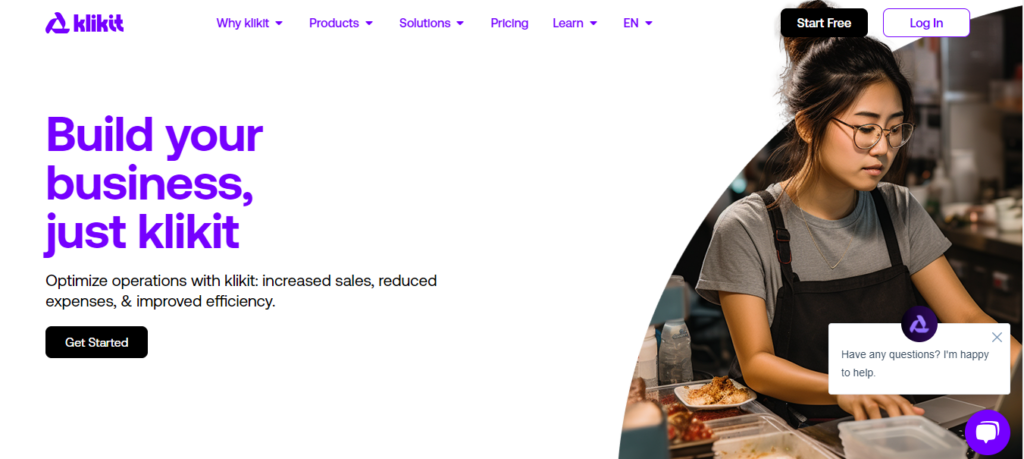
About Klikit Company
Klikit is a service-based company that helps restaurants manage multiple food delivery companies from one single platform. It helps the restaurants improve efficiency and cut down the operational time simultaneously.
Problem finding
To increase the efficiency of their food delivery system, Kilkit’s founder Chris approached us with the idea of such a platform that will manage several food delivery companies.
What Solutions We Provided
For this project, 26 developers from Vivasoft dedicated their time. They worked hard to put all their plans for Chris together. We created a platform with features to control order management, menu management, virtual brand and performance analytics, and many other attractive and effective features.
Thus, the company could manage multipurpose management activities and catch the customer’s attention.
Success
We helped Chris to successfully run his business through these unique features. His vision was achieved through our auctions. The company raised US$7.6M. Now, Klikit has expanded its business to other countries like Singapore, the Philippines, Malaysia, and Australia.
What Technologies Did We Use?
We used many technologies for our projects. The tools we used are React Native, Golang, Elastic Search, MySQL, Flutter, Kubernetes, Google Cloud, Kong, Redis, and Socket ID.
Why Should Startups Outsource MVP Development?
There are several benefits of outsourcing MVP development:
- Access to specialty
- Cost reduction
- Technical support
- Fast entry to the market
- Focus on the main business
- Long-term relationship with outsourcing agents
Summing Up
Creating MVP is a very crucial task for any company. So, it needs to be done perfectly. A Minimum Viable Product is the just right process to minimize cost, and risk and attract your consumers by adapting their demands.
MVP is a complex process and needs to be carefully planned and executed. Using our tips and tricks you can plan a successful MVP for your startup.
Frequently Asked Questions (FAQ)
How do I determine if my startup idea is suitable for an MVP?
Once you have identified your target market, the core features of your products, and done the market analysis to know the trends and competitors properly, if you think that your product is ready to reach the customer base, then you can come to a decision that your startup idea is suitable for MVP.
What is a post-MVP in a startup?
The post-MVP stage serves a specific purpose and works to bring the product closer to the customers. In the post MVP stage, it is necessary to analyze the customer feedback, scale the product, and pricing, determine the financial flow, operating assets, and financing activities, invest in marketing strategies, test the analytics, and determine the value of experienced consultants.
What is the MVP stage in a startup?
MVP is a strategy that allows startups to go public and win audiences’ hearts. This is a process of cutting expenses and attracting investors to invest in the business.
Can a successful MVP lead to immediate profitability for a startup?
Yes, a successful MVP can lead you to immediate profitability for your startup.




